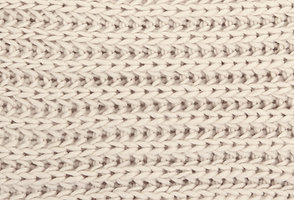














Getting Up Close:
Pattern and Texture Assignment
This assignment encourages you to get close and personal with your subject. It is an exercise in viewing a common object in a new way and examining its finer details. You will be handing in 3 different images of the same or similar object, viewed from different angles, with different aperture or detail choices.
What to do:
-
Choose a subject or an object that you see or interact with every day. Ideally it would be something you think is boring, you don't take notice of, or that you really like but would never think to use as a subject of photography or to shoot close up.
-
Focus on a small part of it. Get as close as your camera will allow you to focus, and shoot away.
-
Try to capture different angles and unusual lighting.
-
Make sure to look for interesting patterns and balance in your images.
Think about everyday subjects or items you use or see daily. For example: the clothes you wear, the food you eat, the whiskers of your cat, the ground you walk on, and even common garbage. There is an entire world that we often overlook because we don't get close enough or look at at all.
Criteria:
You will be marked on:
-
quality of image
-
exposure
-
editing in photoshop
-
template
-
impact of image
-
patterns or texture
-
and balance or composition.
Resources and Background information:
Pattern:
a regular arrangement of lines, shapes, or colors. For example:
A human fingerprint can be viewed as a geometric pattern.
Balance:
Balance refers to how the elements of art—line, shape, color, value, space, form, texture—relate to each other within the composition in terms of their visual weight to create visual equilibrium (so that one side does not seem heavier than another).
There are three main types of balance:
Symmetrical, asymmetrical, and radial.
Symmetrical balance is when both sides of a piece are equal; that is, they are identical or almost identical. Symmetrical balance can be established by drawing an imaginary line through the center of the work, either horizontally or vertically. This kind of balance creates a sense of order, stability, rationality, solemnity, and formality.
Symmetrical balance may be a mirror image—an exact copy of the other side—or it may be approximate, with the two sides having slight variations but being quite similar.
Radial symmetry is a variation of symmetrical balance in which the elements are arranged equally around a central point, as in the spokes of a wheel or the ripples made in a pond where a stone is dropped. Thus, radial symmetry has a strong focal point because it is organized around one.
In asymmetrical balance, the two sides of a composition are not the same but appear to have an equal visual weight nonetheless. Negative and positive shapes are unequal and unevenly distributed throughout the artwork, leading the viewer's eye through the piece. Asymmetrical balance is a bit more difficult to achieve than symmetrical balance because each element of art has its own visual weight relative to the other elements and affects the whole composition.
For example, asymmetrical balance can occur when several smaller items on one side are balanced by a large item on the other side, or when smaller elements are placed farther away from the center of the composition than larger elements. A dark shape can be balanced by several lighter shapes.
Humans, perhaps because we are bilaterally symmetrical, have a natural desire to seek balance and equilibrium, so artists generally strive to create artwork that is balanced. A balanced work, in which the visual weight is distributed evenly across the composition, seems stable, makes the viewer feel comfortable, and is pleasing to the eye. A work that is unbalanced appears unstable, creates tension, and makes the viewer uneasy. Sometimes an artist deliberately creates a work that is unbalanced.
https://www.thoughtco.com/definition-of-balance-in-art-182423




